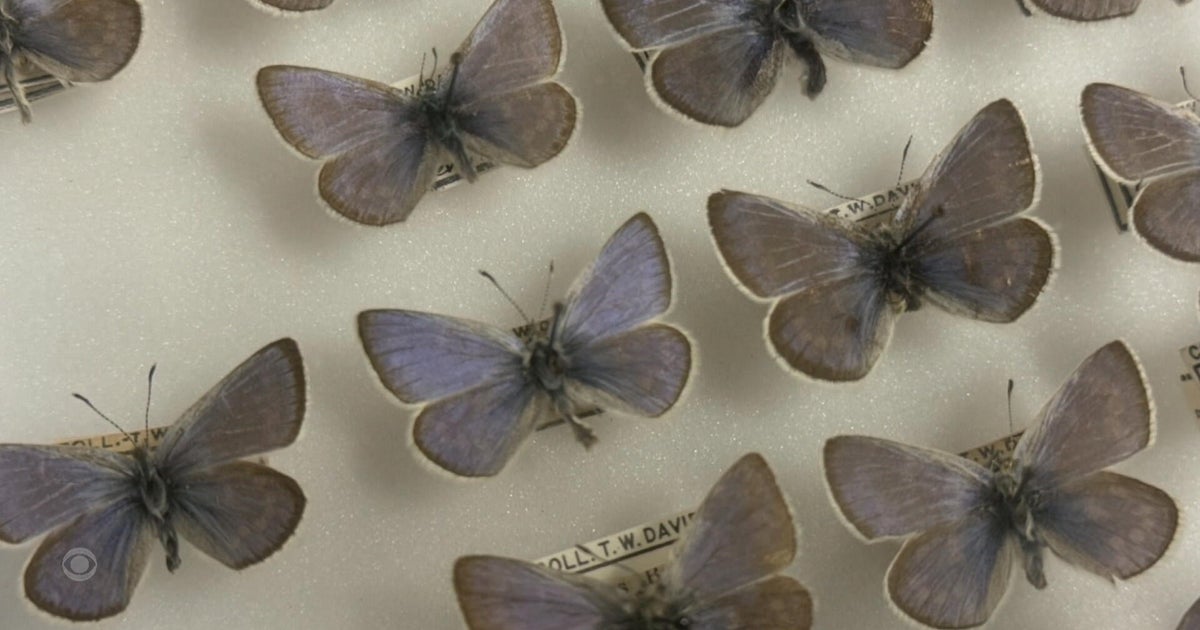About a century ago, the tiny Xerces blue butterfly went extinct, but a new effort is taking flight to help the Xerces' closest living relative fill the ecological role left by its extinction. Juliette Goodrich reports for tonight's weekend journal.
Why it matters
- The extinction of the Xerces blue butterfly over a century ago has left a significant void in its ecosystem, affecting various plant and animal species.
- Researchers are now focusing on the closest living relative of the Xerces blue butterfly to help fill the ecological gap and restore biodiversity.
- This initiative highlights the importance of conservation efforts in mitigating the impacts of past extinctions and promoting ecosystem resilience.
The Xerces blue butterfly, once a vibrant emblem of the San Francisco Bay Area, vanished from the earth nearly 100 years ago, leaving an ecological gap that has persisted ever since. This small yet remarkable species was not just a beautiful insect; it played a crucial role in its environment, interacting with various plants and animals that depended on it. Today, conservationists and scientists are launching new initiatives aimed at revitalizing the ecological roles once fulfilled by the Xerces blue butterfly by focusing on its closest living relative.
These efforts are part of a broader movement to address the consequences of species extinction, a phenomenon that has accelerated in recent decades due to human activity. Researchers are now turning their attention to the closely related butterfly species, the Pacific blue butterfly, which shares similar habitat needs and ecological functions. By nurturing this butterfly and creating conditions that mimic the Xerces blue’s former habitat, scientists hope to restore a balance that has been disrupted for far too long.
Juliette Goodrich, a reporter for CBS News, highlights the significance of this conservation effort in her recent segment. The work of ecologists and entomologists aims not just to admire the beauty of these butterflies but also to understand and facilitate their role within their ecosystems. The Pacific blue butterfly, which thrives in areas where the Xerces blue once flourished, provides a valuable opportunity for researchers to study potential restoration techniques that could prove vital for other endangered species.
The project involves intricate planning and a deep understanding of the specific environmental requirements necessary for the butterflies to thrive. By planting native flora that the Pacific blue butterfly can feed on and breed with, scientists are attempting to create a habitat that closely resembles the conditions the Xerces blue experienced before its extinction. This includes considerations of soil type, moisture levels, and the presence of specific host plants, which are crucial for the butterfly's lifecycle.
Moreover, public awareness and community involvement play essential roles in this endeavor. Educational campaigns are being launched to inform local residents about the importance of butterflies in the ecosystem and how they can contribute to conservation efforts. By engaging the community, scientists hope to foster a sense of ownership and responsibility toward these remarkable creatures and their habitats.
The revival of the Pacific blue butterfly could serve as a poignant reminder of the delicate balance within ecosystems and the far-reaching impacts of extinction. The initiative not only strives to fill the niche left by the Xerces blue butterfly but also aims to inspire a broader dialogue about biodiversity conservation and the urgent need to protect endangered species worldwide.
As the project progresses, researchers will continually monitor the population dynamics of the Pacific blue butterfly and assess the success of their restoration efforts. This ongoing research will provide valuable insights into the challenges and triumphs of reintroducing species into their native ecosystems, especially those that have faced immense pressure from habitat loss and climate change.
In summary, the journey of restoring the ecological role of the Xerces blue butterfly through its closest relative not only underscores the importance of species conservation but also highlights a path forward for restoring lost biodiversity. As scientists and conservationists work hand in hand with communities to foster these butterflies, they are setting a precedent for future initiatives aimed at healing our planet's ecosystems, one species at a time.











